I walk or drive past countless vacant lots, empty hillsides and partially-completed construction projects (ugh) every day, and ever since I heard about seed bombs I've been itching to decorate these areas with a splash of Spring color. This year, I finally remembered to make them at the right time (late Fall) so that I can throw them throughout Southern California's all-too-brief rainy season.
The first step was to get the supplies together. The seed bomb recipe calls for compost, dry red clay powder and seeds. The compost was easy, but the clay was harder to track down. After calling around a bit, I found that the only place to get it locally seems to be Echo Ceramics in West Los Angeles. I was loathe to drive all the way over there, but, happily, Dakota had a job in that part of town so was able to drop by and pick up some clay powder for me.
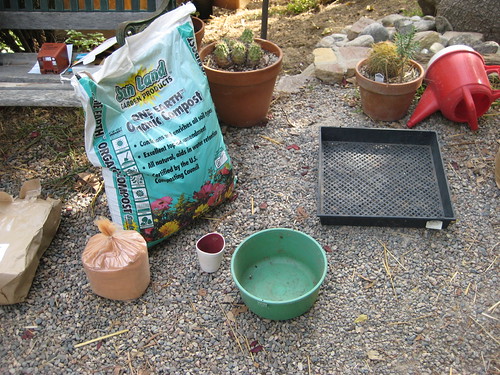
Since I wanted to make sure I was spreading native California wildflowers, I purchased my seeds from the Theodore Payne Foundation. You can visit their facility in Sun Valley or just order online. For this project, I ordered some of their wildflower mixes. If you don't want to go to Theodore Payne, you could also go to the garden center and buy some California Poppy and lupine seeds, which both tend to be pretty ubiquitous.
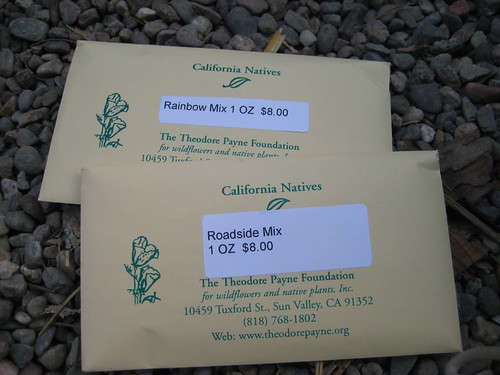
Now, here's where I went a little off the standard instructions. Many recipes I found online recommended a ratio of 5-3-1 or 5-5-1 of clay-compost-seed. But then, I found a couple of posts on a website called Broken City Lab where they tested various seed bomb mixes to see which bombs had the most successful germination rate. They found that less clay was better (although they weren't using red clay), and recommend the following recipe: 1 part seeds, 1 part clay, 1 part coffee grounds, 8 parts soil and 1 part water.
After this research, I decided to go light on the clay at first and see how well the mixture bound together. I also added some granulated organic fertilizer to give the seeds a little boost. Here's my mixing bowl with the compost, red clay and canola meal fertilizer.
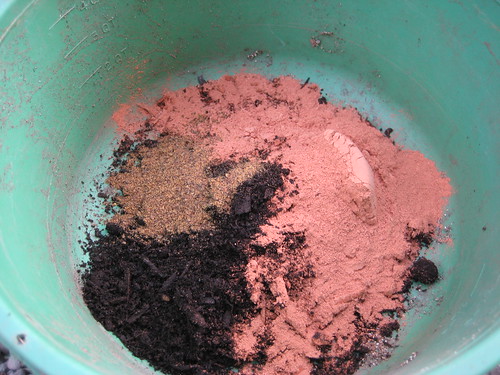
I slowly added water until I got a thick, sticky mixture. By the way, I recommend wearing gloves when you do this. It's messy work.
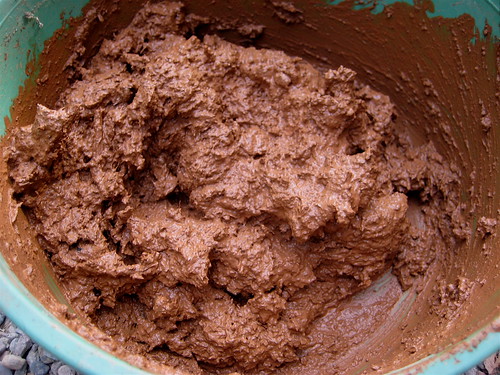
Once I got the clay, compost and seed mixture to a good consistency, I started rolling it into balls. I made mine about the size of a golf ball, for easy throwing. Each wet seed bomb was placed on an old nursery tray. I think I got about 40 seed bombs out of my first batch.
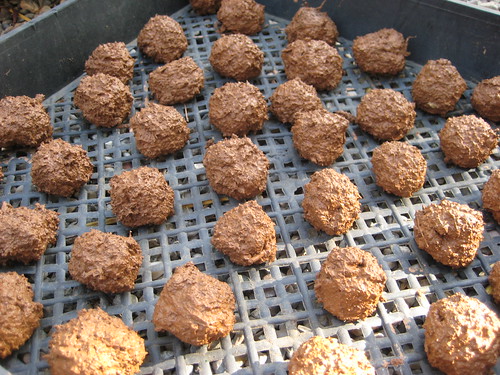
Then, the tray of wet seed bombs went into the basement (a cool, dry place) to dry for three days.
Here are the completed seed bombs.
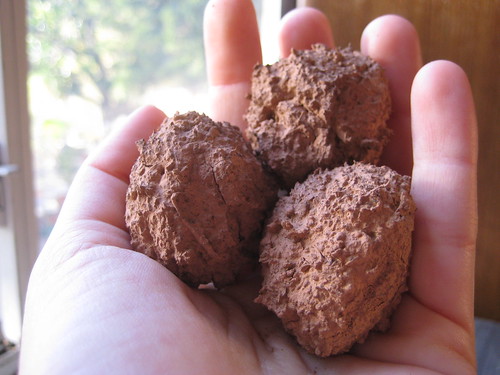
They seem to have dried nicely and stayed together well, with no major cracks. So, I think I using less clay worked out. I didn't measure precisely, but I'd say it was about a 3 to 1 ratio of compost to clay.
Now comes the fun part: throwing the seed bombs. It's actually raining today, so maybe I'll chuck some on my way to and from work. Then, I'll have to keep tabs on those spots this Spring, to find out if I managed to grow some pretty native flowers in some otherwise boring vacant lots.


Sounds like a fun project, I've been wanting to try this too. I am in the Santa Monica area and takes ceramics here so maybe I'll find some clay there, never heard of Echo Ceramics.
I use a one tablespoon scoop and put the wet bombs on parchment paper lined baking sheets to dry. It is just like making cookies. Last winter I made pumpkin bombs for all of the vacant lots I pass on my commute and spread them as soon as it warmed up. This fall I made signs that said "Free Pumkins Here, Help Yourself" and staked them by the sidewalk. It was a great success.
How did your seed bombs play out this spring?